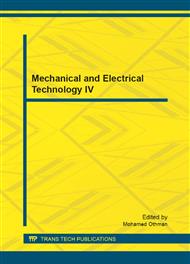p.1244
p.1248
p.1252
p.1256
p.1261
p.1265
p.1272
p.1276
p.1280
An Efficient Sleeping Scheduling for Saving Energy Consumption in Wireless Sensor Networks
Abstract:
Wireless Sensor Networks (WSNs) has been widely recognized as a promising technology in smart grid. However, sensor nodes have limited battery energy. So, we present a mathematical model which is to reduce energy consumption and prolong the lifetime of WSNs. Because of the high density of sensor nodes deployment, a sleep mechanism is proposed to make all sensor nodes work by turns while all service requests can be satisfied. And then, an Improved Sleep Mechanism is put forward to remove redundant active nodes. The simulation result indicates that energy consumption adopting the ISNSS is lower than or equal to the energy consumption adopting SNSS. The SNSS and ISNSS all can save some energy of WSNs to some extent and when the redundant active nodes are removed, the network energy consumption is further reduced based on the SNSS.
Info:
Periodical:
Pages:
1261-1264
Citation:
Online since:
November 2012
Authors:
Price:
Сopyright:
© 2012 Trans Tech Publications Ltd. All Rights Reserved
Share:
Citation:


